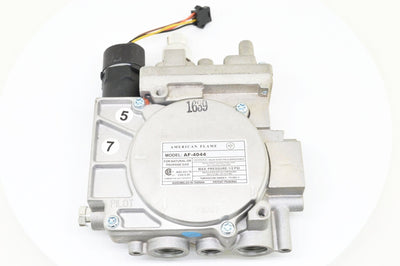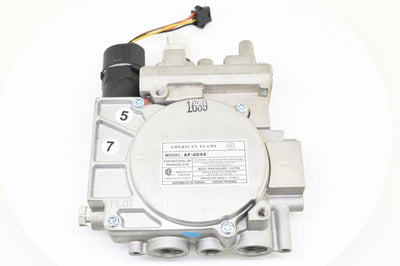Where is the best place to locate a thermometer on a wood insert or wood stove
Where is the best place to locate a thermometer on a wood insert or wood stove?
Wondering where to place a thermometer on your wood stove or insert for optimal results? Knowing the hottest part of your stove is crucial in maintaining efficient heat control. Our comprehensive guide will clear up any confusion, providing you with insights on finding those hot spots and effectively using thermometers to maximize your heating capabilities.
Read on for tips that are sure to improve your wood-burning experience!
Key Takeaways
- A wood stove thermometer helps keep your stove safe and efficient. It lets you control how fast the wood burns, helping avoid over-fire or under-use.
- There are three main types of thermometers: Stove Top Thermometer, Stovepipe Thermometer and Stovepipe Probe Thermometer. Each has a special role in managing heat output to prevent creosote buildup.
- The correct place for a thermometer is either right on the hot spot on top of the stove or in your chimney. Avoid sides or back wall as they don't show true heat levels.
- Use round magnetic thermometers or handheld infrared ones to locate these hot spots accurately. Keep an eye on both high and low temperature alarms; avoiding over firing leading to potential damage and underutilized stoves causing unnecessary fuel waste.
- Special features such as WiFi-enabled sensors can give real-time data straight to your devices for constant monitoring. Regular maintenance like clearing ash buildup aids airflow while using kiln-dried wood reduces moisture content enhancing burn efficiency.
Understanding the Purpose of a Wood Stove Thermometer
A wood stove thermometer plays a vital role in maintaining the efficiency and safety of your stove. It measures the heat output, allowing you to control the burning performance of your firewood and ensure an optimal burn.
This versatile tool can help you avoid over firing, which may damage your stove's integrity, and underutilization that wastes valuable fuel.
Monitoring temperatures also aids in minimizing creosote production—a major cause of chimney fires. Rapid increases in temperature may indicate possible dangers like excessive creosote burning or potential chimney fires.
Equipped with this knowledge, homeowners gain crucial insights into their efficient home heating system’s function while enhancing its lifespan through proper care and operation.
Types of Wood Stove Thermometers
There are mainly three types of wood stove thermometers: the Stove Top Thermometer, which is placed directly on top of your stove to monitor surface temperatures; the Stovepipe Thermometer, specifically designed for single-wall flue pipes to measure gas temperature; and the Stovepipe Probe Thermometer used in double-wall stovepipes for accurate internal temperature readings.
Each one serves a unique role in helping maintain optimal burn and minimizing creosote production while ensuring high levels of fire efficiency and heat output.
Stovepipe Thermometers
Stovepipe thermometers play a crucial role in maintaining ideal operating temperatures for wood stoves. By measuring the temperature of gases in the flue, these devices help optimize burning performance and enhance heat output.
They are equipped with a dial or digital display, providing instantaneous temperature feedback to avoid problems like overfiring or underutilized stove.
While finding the right spot for thermometer placement is critical, there's an optimal place for stovepipe thermometers — on the front of the stovepipe. Contrary to common belief, these should not be placed on the top of the stove unless specified by manufacturer's recommendations.
Using these tools properly ensures efficient home heating system operation while minimizing creosote production that could lead to potential fire hazards.
Stove Top Thermometers
Stove top thermometers are a vital tool for anyone using a single-wall wood stove. They sit directly on the surface of your stove to provide an accurate temperature reading. Utilizing this thermometer type, you can gauge the effectiveness of the fire burning inside your appliance, ensuring efficient home heating and fuel usage.
The optimal burn zone for these thermometers lies between 400 to 650 degrees Fahrenheit - anything above or below could indicate potential issues like overfiring or underutilized stoves, affecting both your safety and the stove's efficiency.
Therefore, proper placement is key in obtaining precise readings, enhancing overall heat output while minimizing creosote production and maintaining safe operating temperatures.
Ideal Placement for Thermometers on a Wood Stove
Correct placement of a wood stove thermometer is crucial to maintain optimal burning efficiency and safety. Depending on the type of thermometer, this could be directly on the hot spot on top of the stove or installed in your chimney for monitoring temperature variations.
Take note that one must avoid placing thermometers too close to the sides or back wall as these areas do not reflect accurate heat levels compared to the middle part where combustion predominantly occurs.
To enhance accuracy, consult manufacturer's recommendations and guidelines from safety institutions when determining ideal placement for your wood stove thermometer.
Locating the Hot Spot
Identifying the hot spot of a wood stove is central to optimal thermometer placement and efficient performance. Typically, this spot is found on top of the stove as heat naturally rises, providing an accurate reading for your handy wood stove thermometer.
However, it's worth noting that the precise location can change depending on the design and conversion equipment of specific stoves. To find this crucial point swiftly and effectively, you could use tools like a round magnetic thermometer or even a high-tech handheld infrared thermometer.
This versatile tool offers instantaneous temperature feedback making hot spot detection much simpler. With either tool at hand, move it around various areas on the stove until you register swift temperature changes and high heat outputs – indicating you've successfully located your stove's active hot spot.
Chimney Temperature Monitoring
Monitoring the temperature of a chimney is a critical aspect of efficient home heating and fire safety. It offers instantaneous feedback on the performance of your wood-burning stove, enabling adjustments for optimal burning and heat output.
A high-temperature alarm feature in some modern digital display thermometers notifies homeowners when the chimney temperature exceeds safe levels, significantly reducing the risk of creosote burnouts or potential chimney fires.
Conversely, low-temperature alarms warn against underutilized stoves that may lead to excessive creosote build-up.
For accurate monitoring, placement is key. A magnetic thermocouple attached directly to single-wall flue pipes or a probe thermometer inserted into double-wall stovepipes provides reliable feedback on operating temperatures within the recommended manufacturer's guidelines.
Chimney temperature can also be monitored remotely with WiFi enabled sensors from TempSure.net providing real-time data straight to your devices. This technology aids in maintaining an efficient home heating system, ensuring you benefit from optimal burn while minimizing harmful emissions and unnecessary fuel consumption.
How to Use a Wood Stove Thermometer
Using a wood stove thermometer allows you to get the most out of your heating system and maintain safety. Follow these steps:
- Locate the hottest spot on the stove using a round magnetic thermometer or handheld infrared thermometer.
- Verify and mark this location for consistent temperature readings.
- Attach your thermometer to this spot for ongoing checks of heat output.
- Regularly monitor the temperature, aiming for an optimal range to achieve efficient home heating.
- Keep an eye on both high and low temperature alarms; preventing over firing and underutilized stove conditions respectively.
- Make use of special features such as WiFi enabled sensors or digital displays if available with your device.
- Also, consider monitoring chimney's temperature, important in detecting creosote burning and potential chimney fires especially in stoves with catalytic systems.
- Familiarize yourself with your manufacturer's recommendations on operating temperatures to secure fire efficiency and safely utilize your wood stove.
Safety Considerations When Using a Wood Stove Thermometer
Using a wood stove thermometer correctly can enhance the safety of your home heating system. It's critical to place it where the stove gets the hottest, thus providing a precise measure of temperature changes.
Using round magnetic thermometers or handheld infrared ones helps locate these hot spots on the stove.
Avoid allowing your wood stove to overfire. Overfiring happens when the fire burns uncontrollably, potentially damaging the integrity of your stove and posing significant risk. Accurate placement and usage of thermometers facilitate optimal burning performance, mitigating creosote production; which is a leading cause of chimney fires.
Primary consideration involves monitoring for high temperatures that could indicate overfiring and low temperatures leading to underutilized stoves.
Alongside correct placement and monitoring, adhere to other safety practices such as regular maintenance; clearing ash buildup improves airflow while using kiln-dried wood reduces moisture content aiding efficient burning.Edit this sample
Conclusion
Determining the most effective placement of a thermometer on a wood stove or insert plays an essential role in safe and efficient heating. This involves locating the hottest spot, which typically lies on top of the stove, and continuously monitoring it for temperature changes.
Remember that even chimney temperatures can hold vital clues to issues like creosote buildup and potential fire hazards ensuring safer usage while optimizing fuel efficiency.
FAQs
1. Where can I best place a thermometer on a wood-burning stove?
The optimal spot to locate your thermometer is usually on the firebox or single wall flue pipes, as recommended in the owner's manual provided with most wood burning stoves.
2. Can I use a digital stove thermometer for my wood insert?
Yes, you can! Both analog and digital stove thermometers will work, but make sure it has temperature calibration settings for maintaining an optimum temperature range.
3. How does having a WiFi enabled temperature sensor benefit me when using my wood-burning stove?
WiFi enabled sensors allow real-time monitoring of your stove's temperature range from anywhere and may also feature high-temperature alarms for safety while ensuring your wood heat remains efficient.
4.What do I need to consider when choosing a thermometer for my multi-fuel stoves or pellet stove damper?
Consider features like Celsius/Fahrenheit reading options, air vents to provide oxygen and airflow control, possibly equipped with high-temperature alarm & its suitability across different parts of the woodstove such as sliding vent or manual lever areas.
5. What role does air flow play when considering where to place the thermometer on my double-wall wooden stove or outside air involving midwest hearth?
Airflow plays an important role in managing the catalytic converter function effectively & prevents creosote burn out; thus placing your coil-type thermometer where there's maximum airflow ensures accurate readings correlating with correct kiln dried wood arrangement inside your appliance.
6. Are any other tools required alongside using thermostats on fireplace inserts like gas logs and Napoleon fireplaces?
While essential gear guides generally recommend exclusively designed HomeSaver Magnetic Wood Stove Thermometer model 40900 or similar ones built specifically for fireplace inserts ranging from bioethanol space heaters to empire fireplaces; it’s always useful keeping HVAC mantel accessories handy complying with Fire Safety Institute guidelines.
← Older Post Newer Post →




























